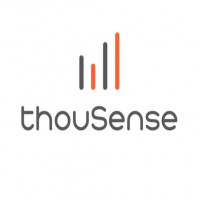Inventory Forecasting Techniques for Reducing Stockouts

Strong 8k brings an ultra-HD IPTV experience to your living room and your pocket.
Effective inventory forecasting is one of the primary aspects that can make or break a company in the current fast-paced market dynamics. Stockouts, where customer demand outpaces available stock, are an inventory forecasting manager's nightmare.
They don't just mean lost sales; they can erode customer loyalty, tarnish your brand image, and even disrupt your supply chain. So, how can businesses forecast demand effectively to ensure products are available when needed?
This guide dives deep into proven inventory forecasting techniques that help companies reduce stockouts, providing a balanced inventory that caters to customer demand while minimizing costs. To boost your inventory forecasting techniques, follow the article to learn more!
Understanding the Basics: What Is Inventory Forecasting?
Inventory forecasting is the process of predicting future inventory requirements based on historical sales data, market trends, and other influencing factors. Unlike simple estimation, it combines statistical analysis, predictive models, and often machine learning techniques to give a reliable forecast of what your inventory should look like.
Effective inventory forecasting helps you stay ahead of demand fluctuations and minimize stockouts, ensuring you can meet customer demands without overstocking.
Why Reducing Stockouts Matters for Your Business
Stockouts don’t just mean missed sales; they have a domino effect that impacts various parts of your business. Here’s how reducing stockouts benefits your business:
Improved Customer Satisfaction: When customers find what they need, they’re more likely to return. A lack of inventory, on the other hand, can drive customers to competitors.
Better Cash Flow Management: Keeping the right amount of stock means less money tied up in inventory. You can invest these funds in other areas of your business.
Efficient Warehouse Management: Overstocking leads to cluttered warehouses, which makes inventory management a challenge. Inventory forecasting helps optimize storage and reduce handling costs.
Key Inventory Forecasting Techniques for Reducing Stockouts
Now that we understand the importance, let's dive into the actual inventory forecasting techniques that can help minimize stockouts. These methods vary based on business size, industry, and the level of accuracy required.
1. Time Series Analysis
Time series analysis looks at historical data points such as monthly or seasonal sales patterns and uses this information to predict future demand. This is particularly helpful for businesses that experience seasonal fluctuations in demand.
Using methods like moving averages, exponential smoothing, or seasonal decomposition, time series analysis identifies patterns in your data. Businesses will be able to anticipate the demand trends and stocks accordingly this way.
Advantages:
Accurate for businesses with clear seasonal trends.
Helps in planning for peak seasons without overstocking.
Drawbacks:
Requires consistent historical data to be effective.
It does not account for the changes and trends in the market that occur suddenly.
2. Causal Modeling
Causal modeling, or regression analysis, predicts demand based on factors that directly influence sales, such as economic indicators, marketing campaigns, or competitor activity. By analyzing the correlation between these variables and sales, causal modeling can offer a deeper understanding of what drives demand.
By using statistical tools, you can identify the factors that impact your inventory forecasting needs. For instance, if a specific holiday drives sales, causal modeling helps predict demand spikes during that period.
Advantages:
More comprehensive than time series analysis as it accounts for multiple variables.
Ideal for industries sensitive to external factors like price changes or promotions.
Drawbacks:
Requires expertise in statistical modeling.
It can be overly complex for small businesses with limited resources.
3. Machine Learning Models
Machine learning models, like neural networks or decision trees, analyze vast amounts of data to find hidden patterns that traditional inventory forecasting models may miss. These models “learn” over time, improving forecast accuracy as they process more data.
Machine learning algorithms ingest historical data, market data, customer behavior, and more, continuously refining forecasts. For instance, if an algorithm detects that demand spikes after specific social media posts, it will adjust forecasts accordingly.
Advantages:
Highly accurate with large datasets.
Can detect non-linear patterns that traditional models miss.
Drawbacks:
Resource-intensive, requiring substantial data and processing power.
May require specialized skills to implement and interpret.
4. Economic Order Quantity (EOQ)
While EOQ is not an inventory forecasting method per se, it’s a valuable tool for businesses that want to balance order size with inventory holding costs. EOQ takes into account factors like ordering costs, holding costs, and demand rates. By determining the ideal order quantity, businesses can minimize the risk of stockouts without overstocking.
Advantages:
Cost-effective for managing inventory.
Simple to calculate and implement.
Drawbacks:
Based on the assumption of constant demand, which may not apply to all businesses.
Doesn’t account for fluctuations in demand.
5. Safety Stock and Reorder Point
Safety stock is the extra inventory kept on hand to prevent stockouts due to unexpected demand or supply delays. The reorder point is the inventory level that triggers a new order to avoid running out of stock.
By setting a buffer or safety stock and defining a reorder point, you ensure that you have enough stock to handle minor variations in demand without facing a stockout.
Advantages:
Simple and effective for preventing stockouts.
Easy to adjust as demand fluctuates.
Drawbacks:
This may lead to excess inventory if not managed correctly.
Requires accurate lead time and demand estimates.
Best Practices for Implementing Forecasting Techniques
While knowing the techniques is essential, implementation is the real game-changer. Here are a few best practices:
Regular Data Analysis: Inventory forecasting is not a one-time activity. Regularly update your models with fresh data to keep forecasts accurate.
Integrate inventory forecasting with Your ERP System: Many ERP systems have built-in inventory forecasting tools, making it easier to manage inventory from a central dashboard.
Collaborate Across Departments: Sales, marketing, and finance teams can provide valuable insights that refine your forecasts. Aligning these departments ensures your forecasts consider all variables affecting demand.
Review and Adjust Regularly: Markets change, and so do consumer demands. Regularly review forecasting performance and adjust techniques as needed to keep up with trends
Emerging Trends in Inventory Forecasting
Technology continues to transform inventory forecasting. Here are a few trends shaping the future of inventory management:
AI and Predictive Analytics: Advanced AI algorithms can analyze customer behavior in real time, offering more accurate demand predictions and reducing stockouts.
Demand Sensing: This technique uses real-time data, like weather or local events, to adjust inventory levels based on immediate demand shifts. It’s particularly useful for fast-moving consumer goods.
Blockchain for Supply Chain Transparency: Blockchain technology allows for better supply chain visibility, enabling businesses to monitor and predict inventory needs accurately.
Conclusion
Reducing stockouts is achievable with a strategic blend of forecasting techniques, data, and technology. While no inventory forecasting method guarantees 100% accuracy, these approaches, when tailored to your business, can significantly cut down on stockouts and improve overall operational efficiency. Whether you're a small business or a large enterprise, inventory forecasting techniques offer a roadmap to a balanced, efficient, and customer-centric inventory strategy.
Note: IndiBlogHub features both user-submitted and editorial content. We do not verify third-party contributions. Read our Disclaimer and Privacy Policyfor details.







